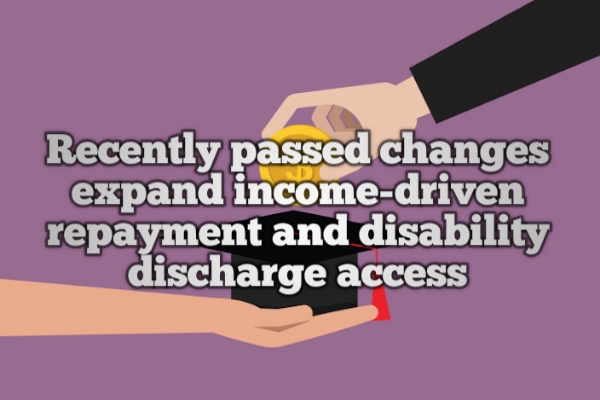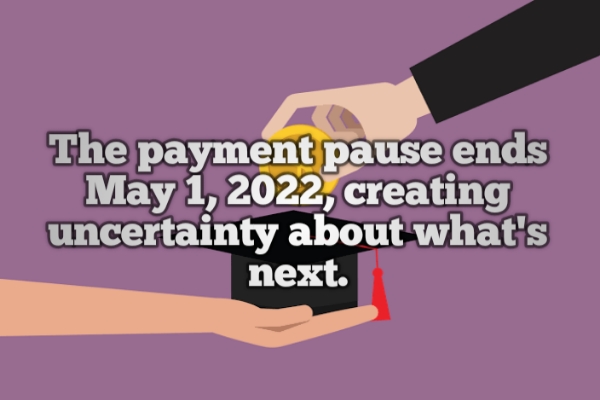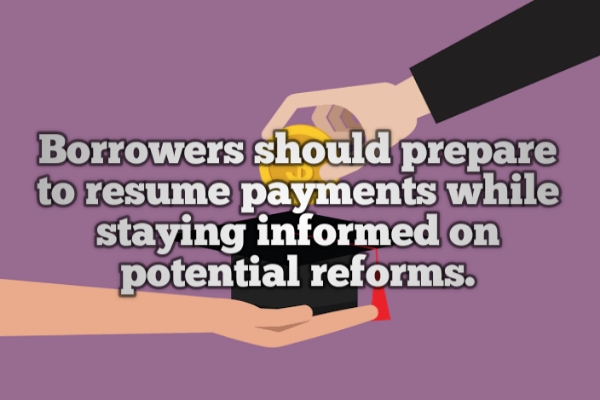What is Happening with Student Loans Right Now?

I got the information that student loan debt has ceased repayment since 2020 and that currently plans are being made to forgive those debts and it got me curious.
So curious that I needed to find out what is really happening, I couldn’t rely on side talks so I began my research and here is what I found.

Student loan debt has indeed ballooned to over $1.7 trillion in the United States, sparking much debate around reform.
With the repayments paused during the pandemic, major changes to student loans have become a hot topic for address and discussion.
So what is really actually happening right now with student loans?. Come with me, Let’s find out now.
In this post, we will look at the current student loan environment, plans proposed by President Biden, actions recently passed by Congress, upcoming deadlines, and what it all means for borrowers.
Table of Contents
The Student Loan
Student loans have surged to the forefront of public policy conversations lately , lawmakers have been analyzing potential reforms and changes that could impact millions of borrowers.
President Biden supports targeted loan forgiveness and fixing income-driven repayment issues..
Meanwhile, certain extensions to pandemic payment pauses have already been approved for the students.
Navigating this complex situation is however challenging for borrowers.
So this intends to provide a guide that breaks down key happenings right now and analyzes how proposed changes could provide relief.
Federal Student Loan Payment Pause
The biggest action affecting borrowers currently is the ongoing suspension of federal student loan payments and interest accrual.
This pause originally went into effect under the 2020 CARES Act and has since been extended multiple times by the White House. The current suspension of payments and interest is scheduled to remain in place through May 1, 2022.
What it means is that Tens of millions of borrowers “have not”had to make payments for over two years now. It is interesting to know that this pause has saved the average borrower around $2,000 over the duration.
However, the current May 1 expiration date is fast approaching. Borrowers need to prepare to potentially resume their payments if no additional extension occurs.
Biden’s Forgiveness Plans and Roadblocks
President Biden had during his campaign expressed his support for both broad and targeted student loan forgiveness. And he has followed through by extending the payment pause and also:
- Forgiving $11.5 billion for certain borrowers, including those defrauded by institutions, disabled veterans, and public service employees. Isn’t that just so amazing
- Proposing $10,000 in forgiveness per federal borrower meeting income requirements.
- Calling on Congress for authority to enact $10,000 in forgiveness through legislation, which would make the action more permanent and less susceptible to legal challenges.
- Seeking to fix Public Service Loan Forgiveness (PSLF). Only 2% of PSLF applications have been approved to date. The Biden administration wants to streamline relief for eligible borrowers.
- Challenging a federal judge’s ruling that the administration lacks executive authority to broadly cancel student debt. This case could go to the Supreme Court.
What this means is that President Biden aims to deliver targeted loan forgiveness, but broad cancellation for all faces major legal hurdles. His proposals also await Congressional cooperation to potentially become law.
Recently Passed Changes..
While the loan forgiveness is stalled, Congress did recently pass a few incremental student loan reforms, which are:

- Temporarily expanded income-driven repayment eligibility through the limited waiver period that ends October 2022. This allows for past periods of repayment to count toward IDR forgiveness.
- There is also the 3-year monitoring period for borrowers who are severely disabled to receive total loan discharges. These borrowers now receive immediate relief, I can honestly imagine the breath of relief.
What this means is that the changes expand and simplify access to existing income-driven repayment and disability discharge options. But the more significant reform remains unlikely given partisan divides.
Looming Deadlines and Uncertainty
With the pandemic payment pause ending May 1, borrowers are made to face major unknowns around what happens next. So below we have put together a couple of probables ;
- There is potential for loan forgiveness if legal challenges are resolved. But broad cancellation for all seems improbable.
- There may be Possible additional payment extension beyond May 1. However, the administration has not committed to this yet.
- And also a repeat extension of the payment pause elevates risk of servicer delays when payments resume. Borrowers saw issues following previous pauses.
- The Interest will most likely capitalize when repayment begins, increasing loan balances unless the payments restart before June 1.

What this means is that Borrowers near IDR forgiveness may benefit from delaying payments if further extensions occur. But most borrowers should prepare to resume payments to avoid capitalization and get a head start.
- It is advisable to Sign up for repayment reminders from your servicer.
Borrowers have to evaluate income-driven plans and other options to get the lowest payment ready, just in case.
- It is also important to stay current so borrowers need to Stay tuned for any May 1 updates, and be wary of forgiveness scams in the meantime.
Potential Future Reform
While progress seems to have been stalled at the federal level, some additional student loan changes remain possibilities if legislative roadblocks can be overcome. And they are:
- Passing $10,000 across the board forgiveness through Congress
- The expanding refinancing abilities to let borrowers shop rates
- There should be simplified income-driven repayment options and approval processes

- Another is Capping graduate debt and lowering interest rates
- Private student loans should be allowed to be discharged in bankruptcy
- There should be an Improved Public Service Loan Forgiveness approval rates
- Another is, Making two-year community colleges tuition-free
Now despite the fact that debates have been made, consensus has yet to emerge around solutions.
Borrowers need to follow proposals but also plan finances based on current circumstances.
Understanding Impact on Borrowers
You’ll agree with me that the path forward is uncertain, so student loan borrowers should understand how proposed changes could affect them. Such changes can come in the following ways:
- A One-time $10,000 forgiveness would provide student borrowers with limited relief for those with higher balances. But any reduction can help.
- The Interest capitalization if repayments restart will increase their balances. Factor this into any potential forgiveness.
- Note that Broader forgiveness could take years to resolve legislatively and through courts so it is imperative to Plan finances accordingly.
- Student borrowers should also Use whatever options currently exist to reduce payments, like income-driven plans. It is risky to bank on unfinalized relief.
- Lastly student borrowers should Stay informed and make prudent choices based on existing options as that is the wisest path forward during this time of massive debate but little substantive change.
Conclusion
It is obvious that the student debt situation is still unfolding. While momentum around reform is building, complex challenges remain.
Borrowers need to separate political rhetoric from current reality.
However, The payment and interest pause has provided temporary relief, but resumption remains imminent, so one should prepare his mind ahead while Policymakers continue to wrestle with forgiveness proposals and long-term solutions.
It is eminent to Treat outstanding debt and obligations seriously, while remaining cautiously optimistic that some expanded relief may emerge. Sustained advocacy around reform could also further shape the trajectory of changes.
And also when borrowers plan smartly, they can navigate the uncertainty and continue making prudent financial decisions for their situation.
While large-scale forgiveness likely remains a long shot, smaller wins still have significant impact.
And lastly while you stay ready for probable outcome, also Stay tuned for updates as the May 1 deadline nears.
But in the meantime, focus energy on maximizing savings and debt reduction through budgets, loan repayment strategies and utilizing existing relief programs.



